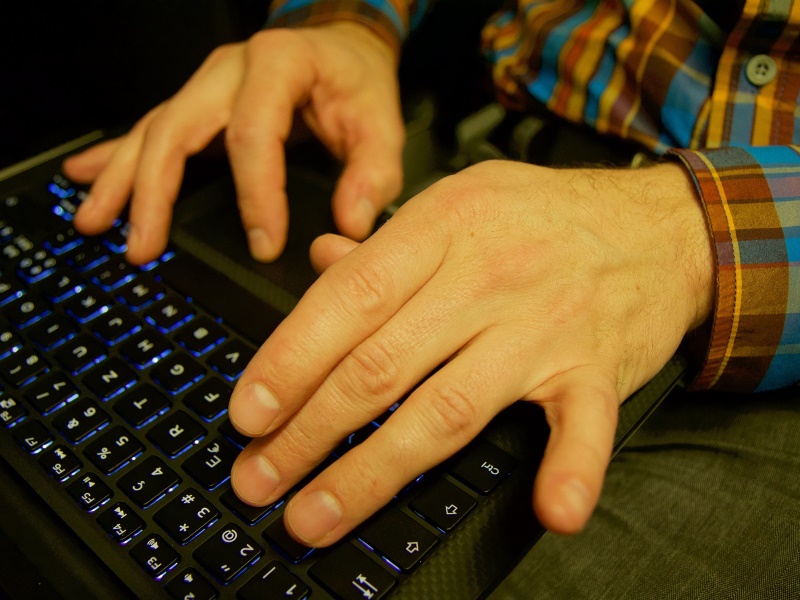- Home
- Social networking
- Social networking Features
- Zuckerberg Hacking Serves as Reminder to Change Passwords
Zuckerberg Hacking Serves as Reminder to Change Passwords

The Facebook founder's rarely used Twitter, LinkedIn and Pinterest accounts were briefly compromised on Sunday, serving as a reminder that everyone is susceptible to hacking.
Safeguards you could take include creating strong passwords and changing them frequently. Yes, all this is a pain, and it's not your fault that the tech industry couldn't grapple with the rise in security breaches. But if you do nothing, someone could break into your financial account or use your social media account to spew obnoxious or hateful messages. Think of how many friends you'll lose.
Here are six things you can do to stay safe.
Pick a good passwordThe more complicated and lengthy a password is, the harder it will be for hackers to guess.
Don't include your kids' names, birthdays or references to any other personal details. Hackers routinely troll Facebook and Twitter for clues to passwords like these. Obvious and default passwords such as "Password123" are also bad, as are words commonly found in dictionaries, as these are used in programs hackers have to automate guesses.
Long and random combinations of letters, numbers and other characters work best.
Don't reuse passwords
Avoid using the same password for multiple sites, so that a break of your school's PTA site wouldn't lead hackers to your online banking account.
You can make things easier on yourself by using a password-manager service such as LastPass or DashLane. They remember complex passwords for you - but you have to trust them. Last June, LastPass disclosed "suspicious activity" and told users to change their master passwords.
Some web browsers such as Apple's Safari and Google's Chrome also have built-in password managers. They work if you switch devices but not if you switch browsers.
New toothbrush? New password
It's important to change your password regularly, just as good physical hygiene calls for replacing your toothbrush every few months.
And don't be tempted to recycle an old one. The longer a password sits around, the more likely it is to fall into the wrong hands.
And if company announces that it's been hacked, change your password right away, even if it says your information wasn't compromised. Breaches are often worse than they first appear. LinkedIn recently disclosed that a 2012 breach affected 117 million accounts- not the 6.5 million previously thought.
Make it harder
Multi-factor identification - which asks users to enter a second form of identification, such as a code texted to their phone - will provide additional protections at services that offer it.
Even if hackers manage to get your password to, say, Facebook, they still need your phone with the texted code. It's not as much of a pain as it seems, as services typically ask for this second code only when logging on from a new device or browser.
Take out the trash
Delete or deactivate accounts you no longer use. Got a spam-filled Juno or AOL email account lying dormant? Maybe it's time to say goodbye.
Just last week, Myspace said a hacker has put up for sale login information for some accounts created before June 11, 2013.
If, like most people, you've moved on to greener social media pastures, permanently get rid of the ones you no longer use. This often can be done through your account settings - as long as you still have your password to sign in.
Social media clean up
And while we're on the subject of social media, make sure you restrict posts to just your actual friends. You can adjust that in the settings.
Some companies try to help their users with this. Facebook, for example, occasionally prompts its users to review who can see their personal information and how strong their security settings are.
Nonetheless, assume that everyone everywhere can see what you're posting. Personal tidbits can not only help hackers crack easy passwords, they also can be used to answer supposedly personal questions to reset passwords.
Catch the latest from the Consumer Electronics Show on Gadgets 360, at our CES 2026 hub.
Related Stories
- Samsung Galaxy Unpacked 2025
- ChatGPT
- Redmi Note 14 Pro+
- iPhone 16
- Apple Vision Pro
- Oneplus 12
- OnePlus Nord CE 3 Lite 5G
- iPhone 13
- Xiaomi 14 Pro
- Oppo Find N3
- Tecno Spark Go (2023)
- Realme V30
- Best Phones Under 25000
- Samsung Galaxy S24 Series
- Cryptocurrency
- iQoo 12
- Samsung Galaxy S24 Ultra
- Giottus
- Samsung Galaxy Z Flip 5
- Apple 'Scary Fast'
- Housefull 5
- GoPro Hero 12 Black Review
- Invincible Season 2
- JioGlass
- HD Ready TV
- Laptop Under 50000
- Smartwatch Under 10000
- Latest Mobile Phones
- Compare Phones
- OPPO Reno 15 Pro Max
- Honor Win RT
- Honor Win
- Xiaomi 17 Ultra Leica Edition
- Xiaomi 17 Ultra
- Huawei Nova 15
- Huawei Nova 15 Pro
- Huawei Nova 15 Ultra
- Asus ProArt P16
- MacBook Pro 14-inch (M5, 2025)
- OPPO Pad Air 5
- Huawei MatePad 11.5 (2026)
- Xiaomi Watch 5
- Huawei Watch 10th Anniversary Edition
- Acerpure Nitro Z Series 100-inch QLED TV
- Samsung 43 Inch LED Ultra HD (4K) Smart TV (UA43UE81AFULXL)
- Asus ROG Ally
- Nintendo Switch Lite
- Haier 1.6 Ton 5 Star Inverter Split AC (HSU19G-MZAID5BN-INV)
- Haier 1.6 Ton 5 Star Inverter Split AC (HSU19G-MZAIM5BN-INV)

















